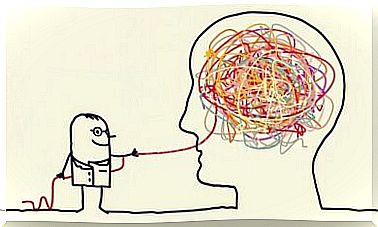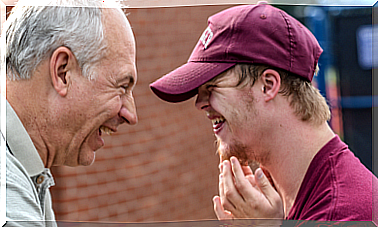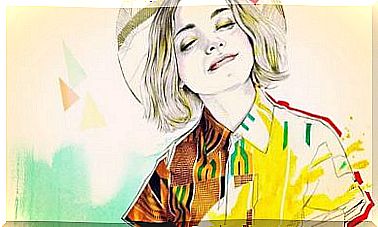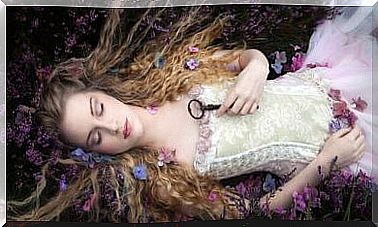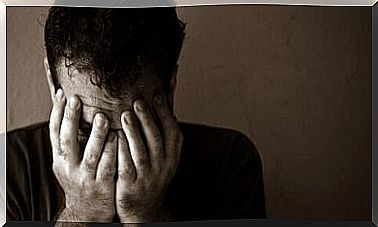Ataxia: Symptoms, Causes And Treatment
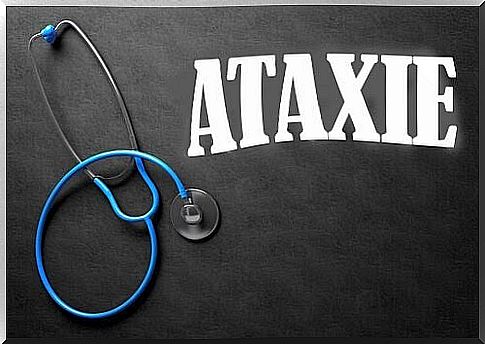
Many things can affect our health and thus our quality of life. Our ability to move can also be affected. For example, there is a specific clinical picture called ataxia. Problems with coordination, posture and voluntary movement are characteristic of this.
This clinical picture consists of a lack of muscle control. As a result, certain movements cannot be performed or only with difficulty. In this article we will talk about symptoms, causes and treatment of ataxia.
What is ataxia?
The word ataxia comes from Ancient Greek and means “without regularity.” The concept encompasses all kinds of syndromes involving movements without a person being paralyzed. Ataxia can affect many parts of the body, such as the limbs, tongue and torso. In addition, it can manifest itself in the following ways:
- Nystagmus: Involuntary, uncontrollable eye movements.
- Dysarthria: Difficulty articulating words and other sounds.
- Hypotonia: a decreased muscle tone.
- Dysmetria: The inability to perform motor actions that can normally be adapted to the distance between the individual and the object.
- Dysdiadochokinesis: A decreased ability to perform various movements quickly.
- Dysphagia: Difficulty swallowing.
- Difficulty walking or a general inability to walk.
- Decreased coordination ability and precision.
- Changes in cognitive functioning (thought processes).
- Changes in emotional functioning. This leads to emotional instability as this is a very demanding condition.
Ataxia can also manifest in combination with other diseases, such as multiple sclerosis. However, it can also manifest itself independently, although this only rarely happens.
Both children and adults can suffer from this condition. Salman et al. (2013) even conducted a study to study the epidemiology of chronic ataxia in children. This study was published in the medical journal, Developmental Medicine and Child Neurology .

What causes it?
Acquired ataxia
This is the result of another pathological picture that the patient already suffers from.
- Toxic. Think of inhaling carbon monoxide or cerebellar degeneration – deterioration of the cerebellum – as a result of alcohol consumption.
- Autoimmune. Ataxia can be a reaction to a severe allergic reaction to gluten, for example, because it affects the cerebellum. Also, the response of the immune system to, for example, serious tumors can contribute to the manifestation of ataxia.
- tumors. As we mentioned above, tumors can lead to ataxia. In addition to the response of the immune system, we can also think of the direct influence of certain tumors. You can think of various types of brain tumors, such as medulloblastomas, astrocytomas and hemangioblastomas.
- Nutritional deficiency. A deficiency of vitamin E, Korsakoff’s syndrome – which is caused by a vitamin B1 deficiency – and other forms of degenerative nutritional deficiencies can lead to ataxia.
- Neurodegenerative diseases. Multiple sclerosis, as we mentioned earlier, can lead to ataxia. Also, spinocerebellar damage can lead to ataxia. The latter form is the result of a genetic mutation within the individual.
Genetic ataxia
These forms are congenital and can be either recessive or dominant autosomal.
- recessive. The most common form of this is Friedreich’s ataxia. Neurodegeneration of the so-called spinal ganglion is the cause of this. This is a thickening of the nerve bundle at the back of the spinal cord. Furthermore, this form of ataxia is caused by neurodegeneration within the spinocerebellar and corticospinal tracts, as well as the dentate nucleus. To put it more simply, neurodegeneration of certain nerves between the spinal cord and the cerebellum causes Friedreich’s ataxia.
- Dominant. Depending on the precise course of the disease, ataxia can also take both episodic (temporary) and progressive forms. Spinocerebellar forms of ataxia, congenital cerebellar ataxia and so-called cerebellar vermis asplasia (again a neurological disorder) are among dominant forms of ataxia.
As you can see, there are all kinds of ataxia! So far, no definitive cure has been found for this. We do have treatments at our disposal that can help patients with ataxia.
Making the diagnosis
Ataxia can be diagnosed through several examinations, often in combination.
- Finger-nose task. The examiner asks the patient to touch the tip of their nose with the tip of their index finger. Afterwards, they are also often asked if they can touch the tip of the doctor’s index finger with the tip of their own index finger.
- Heel-knee task. The patient must lie on his back. The examiner then asks him to place his heel on the knee of his other leg. Then the heel should be guided down the shin. This should be done several times: with both eyes open and closed, and the legs should also be alternated.
- Rapidly changing exercises. The examiner asks the patient to turn both hands to both sides at the same time.
- Electromyogram. This is an assessment of the conductivity of certain nerves.
- Psychodiagnosis. A researcher performs neuropsychological examinations to assess the patient’s executive functions such as planning ability.

Possible treatments
Treatment options for this condition are limited and often non-specific. The treatments are more focused on rehabilitation and maintenance of existing functioning. So they are not aimed at healing.
Psychological interventions are also important. First, they help the patient understand what is wrong with them. Second, they can also help the patient learn to deal with emotions and thoughts about his condition.
Last but not least, the patient’s caregivers should also participate in this psychological intervention. This way they can learn to take even better care of their loved one.
